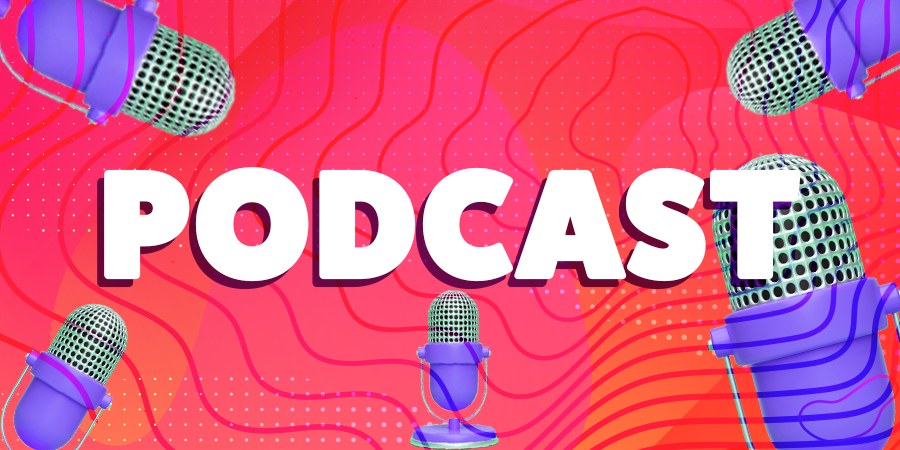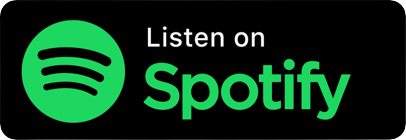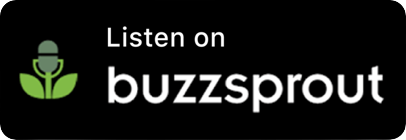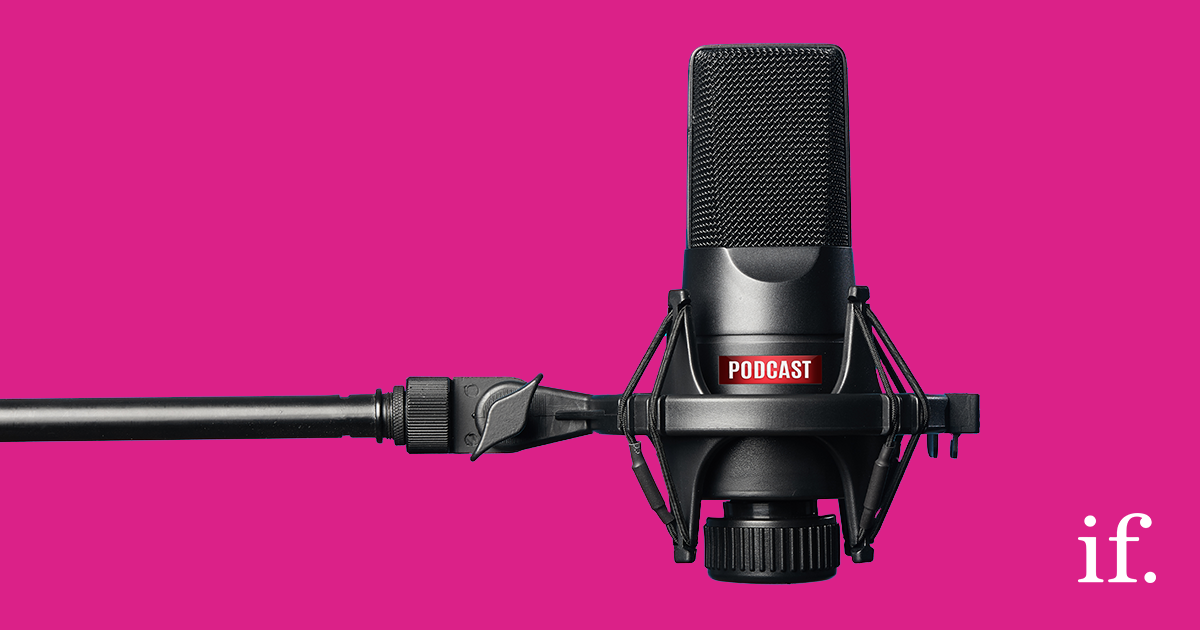Ep 6: Serious Social – No! Don’t just repurpose social content
So, how do we speed up creativity? How do we increase the relevancy for our audiences, and how do we create a well-oiled production machine? Katy outlines a framework for creating the right content under pressure.
If you’re after more know-how to break the social boring, subscribe now.
Full Transcript
Need a framework for creating the right content under pressure? We’re here for you. This episode was recorded live on Facebook, on Friday 24th April 2020.
Katy –
So one of the things I want to talk about now is about rolling our sleeves up, I think I mentioned this last time, we want to roll our sleeves up and get on with the job now and for many of us who have decamped home, I think the biggest issue has been that we have been a bit unsettled and so repurposing content has served us really well. But now our audiences want more and we’re missing the opportunity to connect, to entertain, be useful by rehashing old content that we’ve got, but alongside of that need for our audiences, I’m fairly aware as everybody else who works in social media that there are challenges. There are challenges in finding the resource that you need, underfunding possibly but there are also challenges in terms of the way our audiences are behaving online. They’re swinging rapidly between topics.
The traditional methods we use in content marketing have changed, for instance, where we’re used to a content rhythm in social media often called hygiene, hub and hero content, that rhythm has gone because everything is changing and swinging quite wildly. Some brands are meeting this by going real-time, almost, with their content, which is listening to the conversation, looking at what they can post out there and doing that almost in a live fashion. The problem is that’s really resource-hungry and has a real challenge in terms of getting that stuff done in a timely fashion, and it’s bloody exhausting – there’s hours of it, so we have to address that element, if not we can’t carry on like that… rushing content out the door, but also that the fact our audiences are being more, more scrutinising of our content a little bit more. They are kind of picking it apart a bit more which means that we need to focus on quality content, not just volume.
So, how do we speed up creativity? How do we increase the relevancy for our audiences, and how do we create a well-oiled production machine? So, the way to do that is to create a framework – a framework that kind of creates guardrails for the way that you work, which allows the world to keep changing. And we have a framework that’s built on three elements – lenses, filters and sparkers, and what they are able to – what we’re able to do is use that framework then to change gears very quickly. If you think about it, we’re very used to navigating a kind of river of – predictable content, predictable times, moments, things that happen on a regular basis. We’re heading for BBQ season, for instance, that kind of thing, the predictability of it, and we’re used to managing that in a very focused way.
Now we’re no longer sailing quietly down a river, we are actually in the rapids where there is also the danger of toxic topics, where we really have no right to be or we shouldn’t be talking about and that makes us a little bit more edgy. So, we need to think about our audiences and we need to make sure that how we navigate through that allows us to produce content -that we- where we can manage that process much easier.
So, I talked about lenses, filters and sparkers – let’s talk, to start with, lenses. So, lenses give you a clear view of your audience, from your audience behaviours, attributes, values and changes, which are just constantly changing. I don’t know if you saw, but, if you haven’t go back and watch Belle Lawrence’s live a couple of weeks ago where she talks about how audiences have become a community of tribes, and this is really important because now we’re clustering around values, so you may have a very typical audience persona set which is just altered slightly because values and attitudes and behaviours are focused more – and so, we have tinier, more shattered, fragmented audiences that are kind of clinging together in these communities. So, we need to identify who those are and then create a lens for each of those without going into great volume amounts of detail on building personas, I mean just a very, very clear lens where each tribe, where we look at them and saying – where are they playing? For instance, you know they may not be in their usual social media channel, they may have wandered into a new one, I mean the uptake on TikTok is a prime example of people switching from one thing to another, they may have different things that matter to them today that didn’t matter to them three weeks ago, or six weeks ago. We need to understand their interests, what they what sparks them, we need to understand their pain points, and also where they’re passionate what are they interested in right now. And then once we have got a grip on these multiple tribes we need to go back over and layer our brand purpose which is going to alter ever-so-slightly for each tribe.
Let me give you an example – if you’re a media company that’s pushing out nice information resources and have done very well so far, you may find that your tribes have now set themselves on two different sets of values – one value might be the news- hungry, can’t stop watching the news, I know because I’m a bit like that, and then you’ve got the entertainment and fun tribe and sometimes they overlap – you would start to push out content to different, just with a different tilt to it. So the tilt would be for the news hungry you might want to do analysis on the news and updates that actually go into more depth or a more fact-based, which would be a good thing, but on the entertainment side you might be looking at reviews of films or books or things that the people can enjoy. The purpose of creating a lens is so that you stop being bland – it’s a real danger that you become all things to all people, and therefore so washed and rinsed that you you’re actually saying nothing in which case “who cares”, but it also prevents you from kind of joining the mass movements when you have no right to be there, so those brands that are joining the Thursday NHS clap without a right to have that conversation are in the wrong place. It also helps you identify that some parts of your what were your audience and they’re now your tribes you can’t communicate with right now because you haven’t got anything useful, helpful entertaining or anything that would fit around them. So, so it allows you to understand audience in a slightly different way. Once you’ve got that mapped out, and it really is just you know five or six bullets on each of those, you’re able to end to build filters based on those lenses and that the filters of the is the element of the framework that allows you to test your content. Effectively, it allows you to create a set of rules so that you can jump in and out of the changing themes without having to constantly re-evaluate your strategy, or your, or your approach to content.
So, the filter roles help you stick to your content goal, so for instance they help you understand if you’re on track – are you producing content that has distinctive value? Is the content unique or have a twist on it that makes it a little bit different, because you still have to stand out in a noisy crowd? Is it useful to the tribe, is it actually providing something of value to them and does it matter to them? Is it the right tone? So, you would create a set of rules which means that not only you are creating the content but everybody around you can start to pull in resources around you to help support those rules and operate in terms of your content.
In my experience, that set of filter rules will always be bespoke to your company. So, I can’t tell you what they’ll be without working with you, so, so you need to have really good think!
A great example is – let me give you an example that’s a hypothesis, so Brandwatch have a Covid 19 resource which looks at worldwide conversations in social media, and it’s free, and what they’ve seen is that conversations around mindfulness and meditation have increased in March and they really went up, however, they are beginning to drop now. Instead there’s a massive spike in conversations about yoga mats. So, with a filter you are going to be able to switch the conversation quite easily without lurching from one piece of content to the next. So imagine you’re a gym company who wants to, when this is all over increase membership – you’ve identified a lens of a tribe that is that is really interested in wellbeing and that could be made up of occasional gym users, or the regular attendees which is how you would have traditionally set them up. But now what you’ve been looking at them as wellbeing interested, if you see what I mean, and your filter is that you will provide step-by-step guidance and be the authority on mind and body – that’s going to be your thing. So, your first part in March, according to the research you may well put it out step-by-step guides on mindfulness, or meditation. You might do a daily meditation session, but as the conversation begins to switch to yoga mats, you might look at comparisons – you’re not selling anything but you are providing information say “here are comparisons of yoga mats” or “here’s the best places to go and by yoga mats”. The deal being is that you’re able to position yourself as an unbiased expert – so I hope that makes sense, because it’s a hypothetical case but I hope it makes sense.
The other it filters is that you have to be quite disciplined – this is quite difficult when you’ve had a great idea out there and you can’t – you can’t get it out there because you know it doesn’t fit the way your brand needs to be perceived, so you have to be quite disciplined with it!
So now you’ve got your lenses and your filters the last element is the sparkers and the sparkers are really – because we’re quite often brainstorming by ourselves and we want the opportunity to not only be more creative faster, but also to think of ways in which we can shatter creative ideas into different concepts – so what I mean by this is kind of almost like a an aide memoire for us to help us see all the different things that we could be doing. So, we might look at our lenses and our filters and say what partnerships and/or advocates or influences can we build relationships with. So, honing it down on those tribes and actually look at fewer is better but stronger and better relationships. You can also look at what you already have as a business and how that might now appear as through, through a particular lens. At the Smithsonian Museum and doing a fantastic job at this, because they’ve released all their kind of visuals and pictures, and they’re saying to people “go innovate”! So, you can go and take a bi-plane from the 40s and and recolour, it and put yourself in it if you wanted to, but you can also use some of the patents and diagrams to build your own or have new ideas in terms of technology, so it’s fantastic!
Another example of somebody using resources they already have is NASA who came out with Earth Day 2020 resource. One of my colleagues is going to put a link out on this, it is a fantastic site for the community of NASA, but they are making all this information available to you, with a heck of a load of downloads, including downloads that you can get as your ringtones, which pleases me no end! So you’re looking at what content that might fit you may also look at what curated content that also fits the filter so you can start to reach out, what UGC might work within each of these tribes, and then you can focus on more quality format so AR filters, I mean particularly Snap filters are increased 37% it through March and 75% of users are using the AR filters right now to engage, so you may say I’ve now got the chance to step back and do something a bit more detailed, whether it’s AR or getting a dev team to develop a chat bot – all of these things are things you can now do because you have a framework of how you’re going to be useful. And of course, you’re going to pepper your posting plan with content you already have, and assets you already have, but, and this the key, but through the filter. And by putting it through the filter you’re able to maybe not should show or reshare a whole video but an element of it – the copy content on a visual may change so that it now fits to the right context, the right audience, or tribe, with relevant meaningful content But it also allows you to do some really flexible things, so you can also then as a consequence think about how a set of images could become a gif, or how video could be repurposed as a podcast, how you could maybe do audiograms, and you can reimagine how your original content was, so you’re not just repurposing and pushing it back out but actually creating something new from old. You want the right messages, and that’s what the framework does it forces you down a road where you think all the time “how do I make this fit, how do I make this piece of content fit”.
A great example is Travelzoo who obviously can’t be going out there selling holidays right now, who looked at the content they have, which is fantastic beautiful visuals and have created their virtual vacation. Take a look at their social, it’s great, you know, for that ten minutes over lunch where you wish you were somewhere else!
Now I know creating the framework is work upfront, but it will save you down the line, because once you have that, the guardrails, it’s a bit like you know when you go bowling and you put the kids guardrails up, it just stops you your content falling into the gutter. And that’s the best that will happen, which is that it just floats on by and nobody notices it, but actually what you really don’t want to happen is it to fall in the gutter and for it to flare up in the wrong way. So, the reality is it puts the guardrails up, it makes you understand that the behaviours of our audiences have to changed, but also the rules and the purpose of your brand and how that fits alongside it.
If you’re after more know-how to break the social boring, subscribe now and check out the show notes for links to our website and social profiles.




